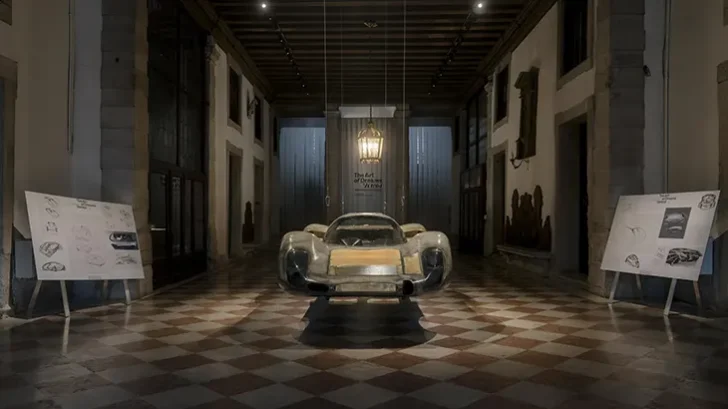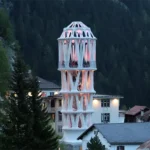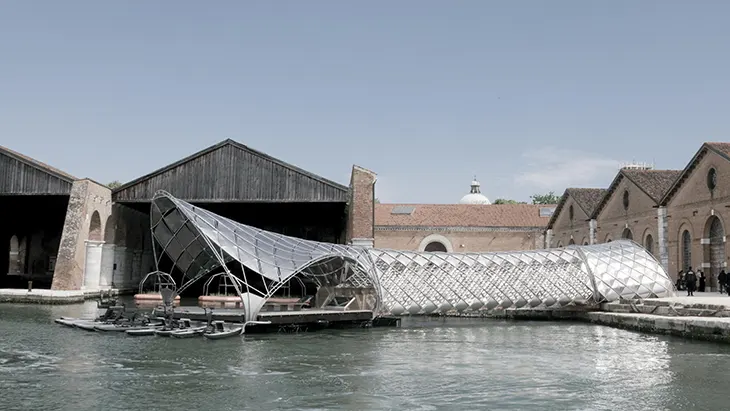
Presented during the opening of the 2025 Venice Architecture Biennale, Gateway to Venice’s Waterway marks the first collaboration between the Norman Foster Foundation and Porsche. Located at the Arsenale, the 37-meter-long structure stands as a speculative transportation hub for the Italian lagoon city, responding to the urgent infrastructural and environmental challenges Venice faces today.
Venice Architecture Biennale
The installation was created as part of The Art of Dreams, Porsche’s ongoing cultural initiative that invites leading artists and designers to explore the boundaries of form, function, and imagination. For this edition, Porsche designers and architects from the Norman Foster Foundation worked jointly to present a shared vision for the future of urban mobility, one rooted in architectural clarity, historical sensitivity, and sustainable ambition.
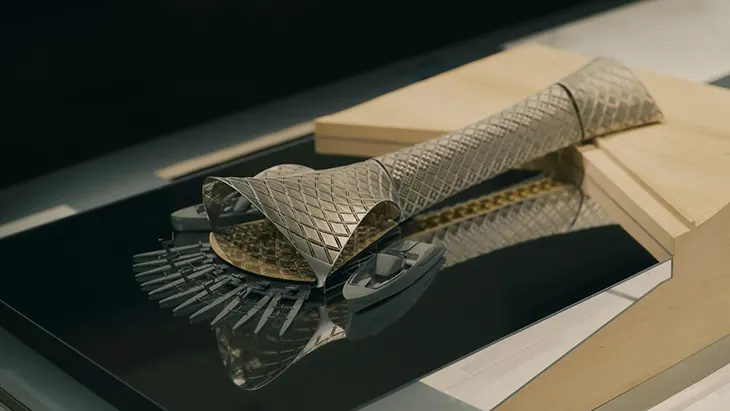
Visually, the installation recalls Venice’s network of bridges while suggesting a new kind of connectivity. Its aluminium structure references the lattice tube frame of Porsche’s 908 race car, offering both material lightness and structural integrity. A kinetic skin, inspired by the geometric motifs of the new Macan, brings a contemporary surface language that sits in dialogue with the city’s centuries-old urban fabric. The result is a working prototype that introduces alternative transport solutions for cities built on water.
Throughout the Biennale’s opening week, the Gateway structure connects directly to emission-free vehicles, including Schiller water bikes and the Frauscher x Porsche 850 Fantom Air, an electric sports boat driven by the same system used in the Macan Turbo. In addition to these modes of transport, students from Style Porsche and Studio F.A. Porsche Zell am See presented conceptual projects proposing new urban mobility frameworks.
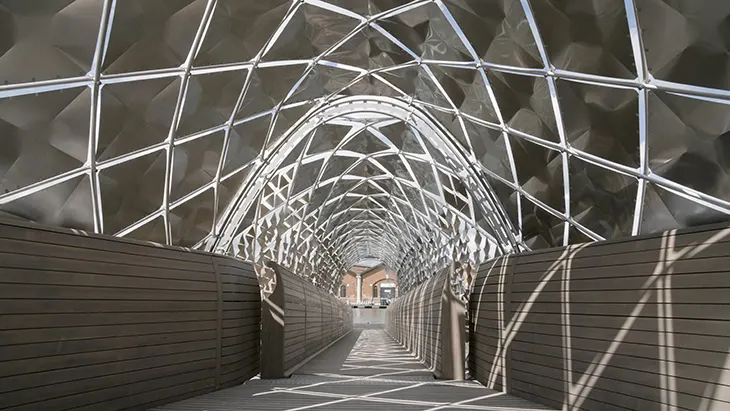
Inside Palazzo Pisani Moretta, visitors are offered a behind-the-scenes look at the collaborative process. Design documentation, hand-drawn sketches, and prototypes trace the evolution of the structure, revealing how both teams approached mobility not just as infrastructure, but as experience. This approach reflects Norman Foster’s long-standing belief in the interconnectedness of architecture, planning, and quality of life.
“Dreaming allows us to imagine solutions to what may seem impossible,” said Foster. “This project offers a scenario where advanced mobility functions alongside historic preservation. It’s a model for cities like Venice to look forward without forgetting where they came from.”
Michael Mauer, Vice President of Style Porsche, echoed the sentiment. “This collaboration pushed our design thinking beyond the automotive sector. Working with Foster and his team allowed us to consider the identity of our brand within a broader urban future.”

Environmental responsibility plays a central role in the installation’s concept and execution. Every material choice was guided by resource efficiency and minimal ecological impact. The modular system, developed for easy assembly and disassembly, aligns with broader conversations in architecture around circular construction and adaptive reuse. More than a display, the structure invites cities to reconsider how design can intersect with policy and transportation reform.
First launched in 2021, The Art of Dreams series has previously appeared at global platforms including Art Basel Miami, Milan Design Week, and Frieze Seoul. With each edition, Porsche commissions a creative mind or studio to explore themes related to aspiration, form, and future living. This eighth edition, shaped in collaboration with the Norman Foster Foundation, adds new architectural depth to the series, bridging speculative design with built possibility.
Gateway to Venice’s Waterway acts as both an urban concept and a design artefact, positioned between the physical needs of the present and the imagined scenarios of tomorrow. For Venice, it’s a conversation starter; for architecture, it’s a reminder that structures don’t just house movement, they can also shape how it evolves.
